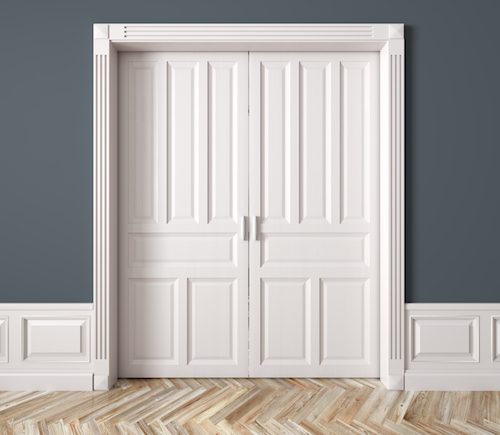
There are hundreds of varieties of trim, from standard to uncommon, and it has been around for millennia. The chair rail, crown molding, baseboards, and window and door trim are the trim styles that are most beneficial in modern homes.
What Is Trim?
A Trim is any decorative item that fills in cracks and edges to give surfaces a smoother appearance. Trim can also be made of material, such as PVC, but is typically composed of a light wood like pine or hemlock.
Trim serves the strictly cosmetic purpose of smoothing off a room’s rough edges. Or it could be like highlighting specific portions of a photo. It gives the space a great, polished appearance.
Trim is quite practical as well. For specific reasons, certain areas of a house are left exposed and are not covered up. Flooring is one such example. Walls and floors never touch. This space allows the two to move apart from one another.
Window and Door Trim
The edge of doors and windows is framed by window and door trim.
Purpose
- Cover up rough plaster or drywall margins around doors and windows.
- Make windows and doors appear sharper and more “jump out.” White door and window trim contrast beautifully with deep-hued walls.
- The framework around doors and windows should be covered.
Features
- Trimming on doors and windows is always important. All windows and doors require trim (often called casing or molding).
- Typically, window trim and door trim can be used interchangeably.
- Trim closely resembles the door or window when it is painted and securely fastened to the framing.
- To make it easier to remove fingerprints, the door trim is typically painted with a semi-gloss or gloss finish.
- Kits and individual door and window trim pieces are available for purchase.
Chair Rail
A chair rail is a narrow, horizontal wood trim that runs around a room at roughly waist height. Chair rail is typically used in dining rooms.
Purpose
- Ensure that chairs don’t accidentally knock into walls.
- Enhances a space, especially dining rooms.
- Reduces the size of enormous spaces as seen.
Features
- It can stand alone or be put on top of the wainscoting.
- A rare kind of wood trim.
- Usually located in homes with more classical architecture.
- An attractive addition to a dining room or large living room, albeit not necessary.
Crown Molding
At the intersection of the wall and ceiling, crown molding is a horizontal strip of internal wood trim that runs along the top of the walls. Some homes do not have crown molding. Even kitchen cabinets with lower-quality cabinets might have it applied on the tops to disguise the higher soffits.
Purpose
- Create a visible barrier between the walls and the ceiling.
- Can hide subpar plaster or drywall work on top of walls.
- Crown molding enhances the appearance of a space more than it serves any practical purpose.
Features
- The ceiling, not the wall, is typically painted the same color as the crown molding.
- It is mounted at a 45-degree angle.
- When installing crown molding, cope joints and mitered joints are both utilized.
Baseboards
A baseboard, also known as base molding, is a sort of ornamental and practical wood trim that runs at the base of the walls of a house. There are baseboards in every home, whether they are made of wood, PVC, or flexible plastic.
Purpose
- Make the difference between the walls and the floor visible.
- Prevent dirt from entering behind walls.
- Keep insects and vermin out of the house.
- Improve the wall’s unkempt bottom edge.
- Prevent the wall’s bottom edge from breaking.
Features
- Although taller base molding can be obtained, it is often found in heights between 2 and 8 inches.
- It can be constructed out of multiple components or be one solid piece.
- Baseboards that are thinner are simpler to curve to the walls.
- Thicker baseboards might have appealing, deep profiles (designs).
- Available in polystyrene, MDF, bare wood, and primed wood.
- To close the space between the baseboard and floor, a quarter-round is typically added at the base of the baseboard.
- Prevent the wall’s bottom edge from breaking.
Now that you know more about different types of trims that can make a dramatic change in your home, making it appear more modern and elegant, call us by dialing (909) 947-3310 today and speaking to a Moldings Plus specialist today about our services.



